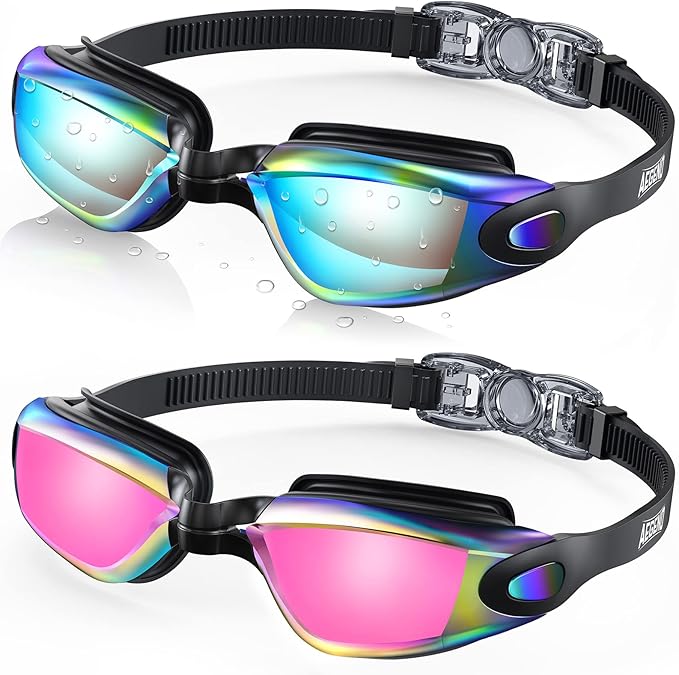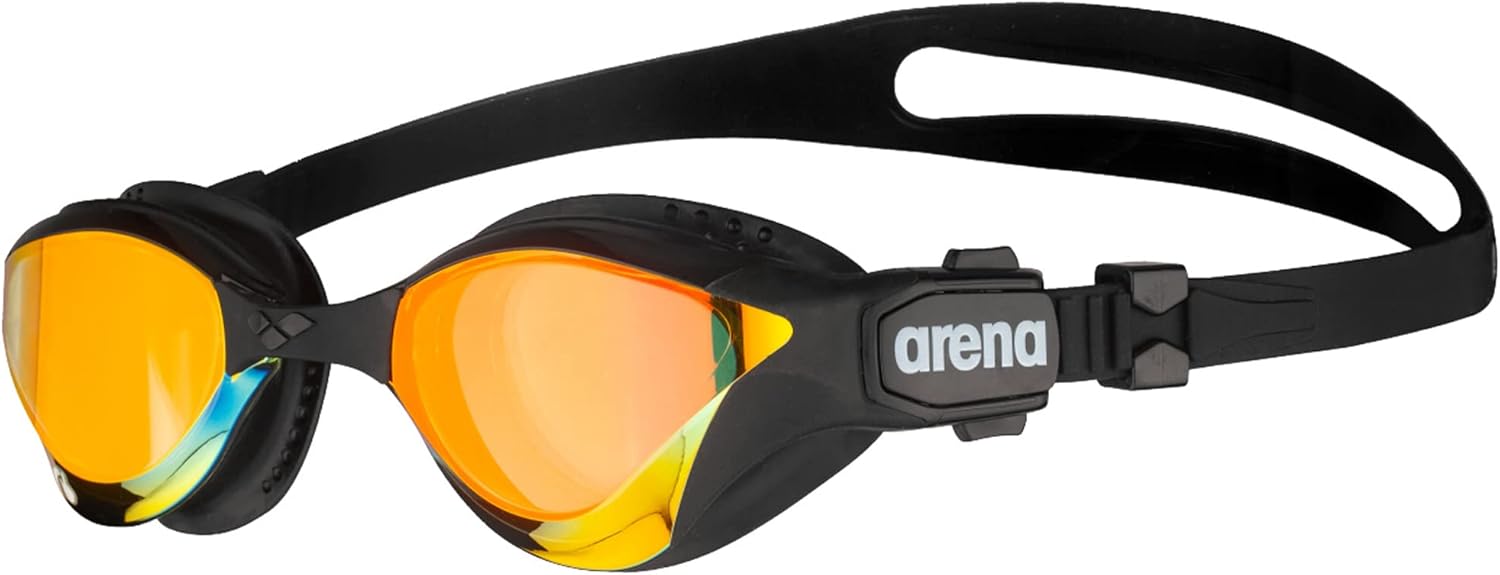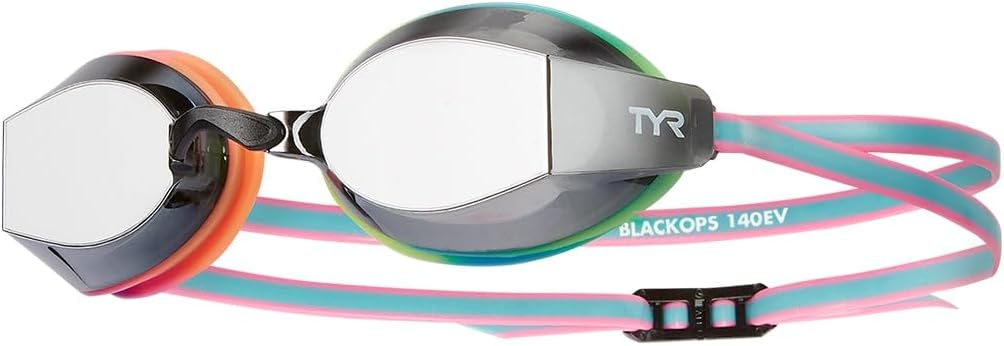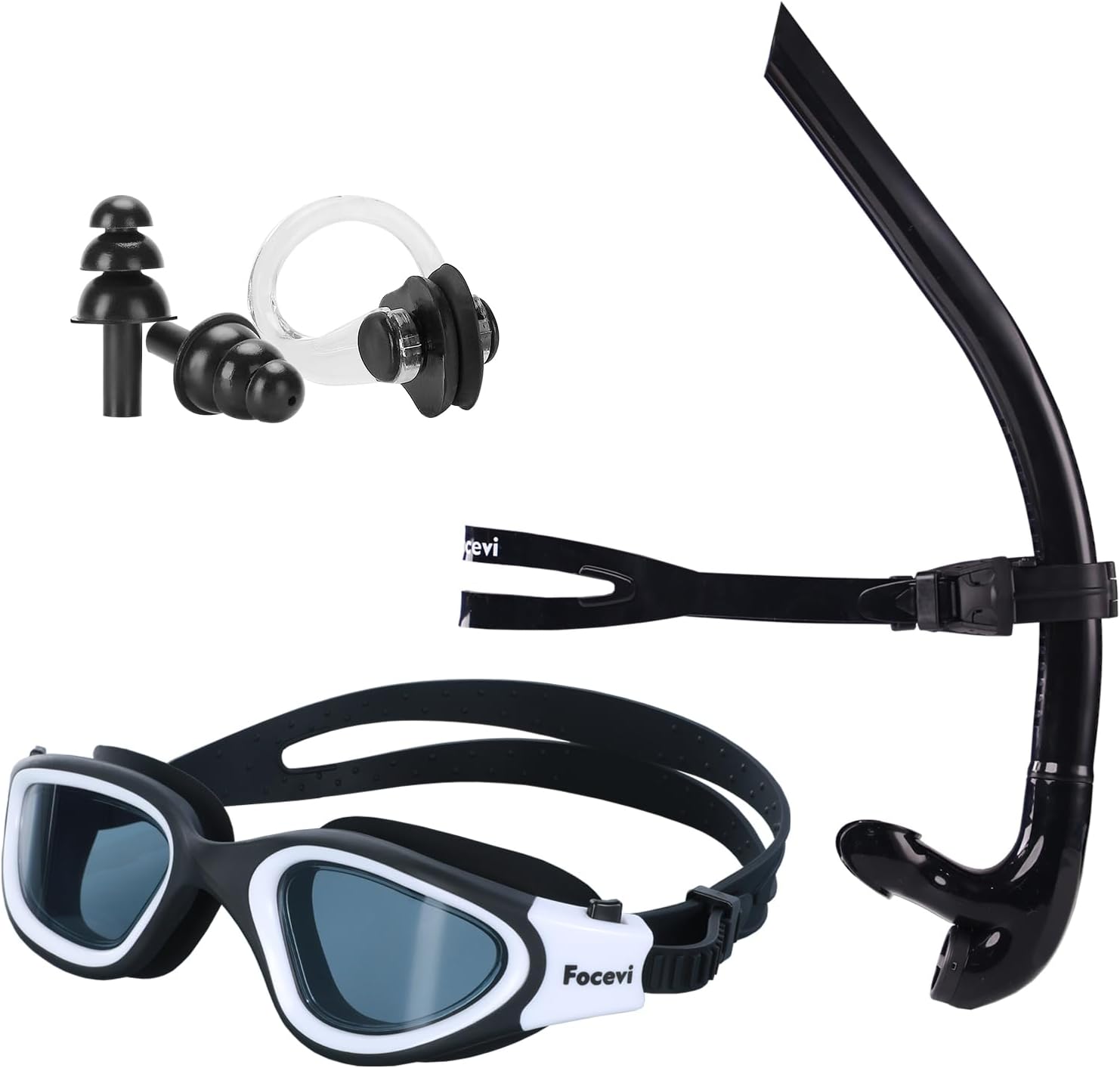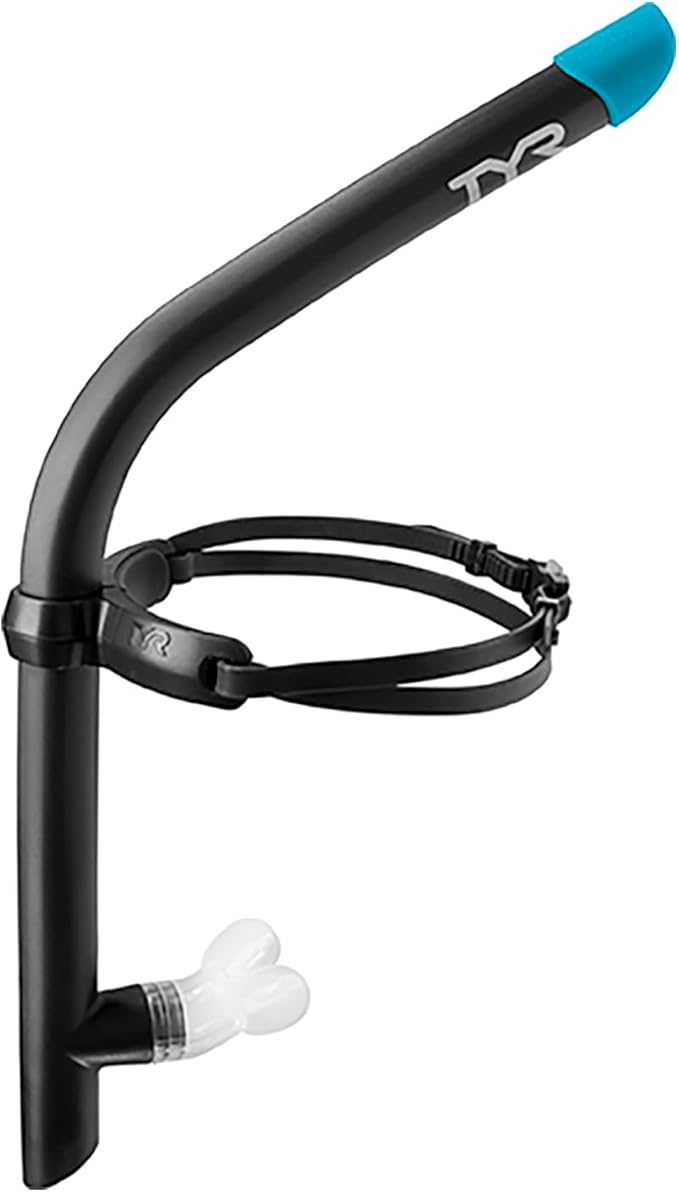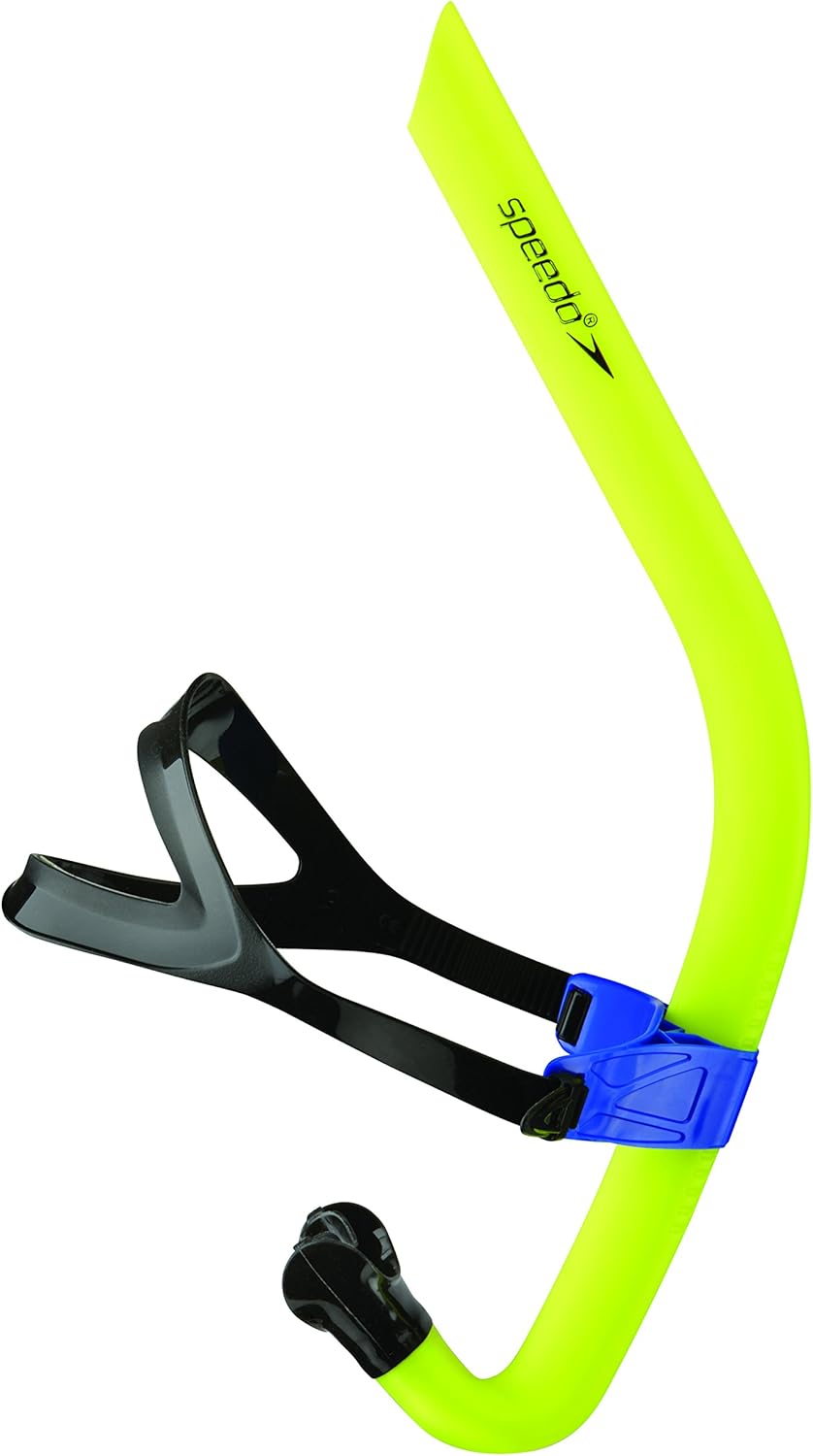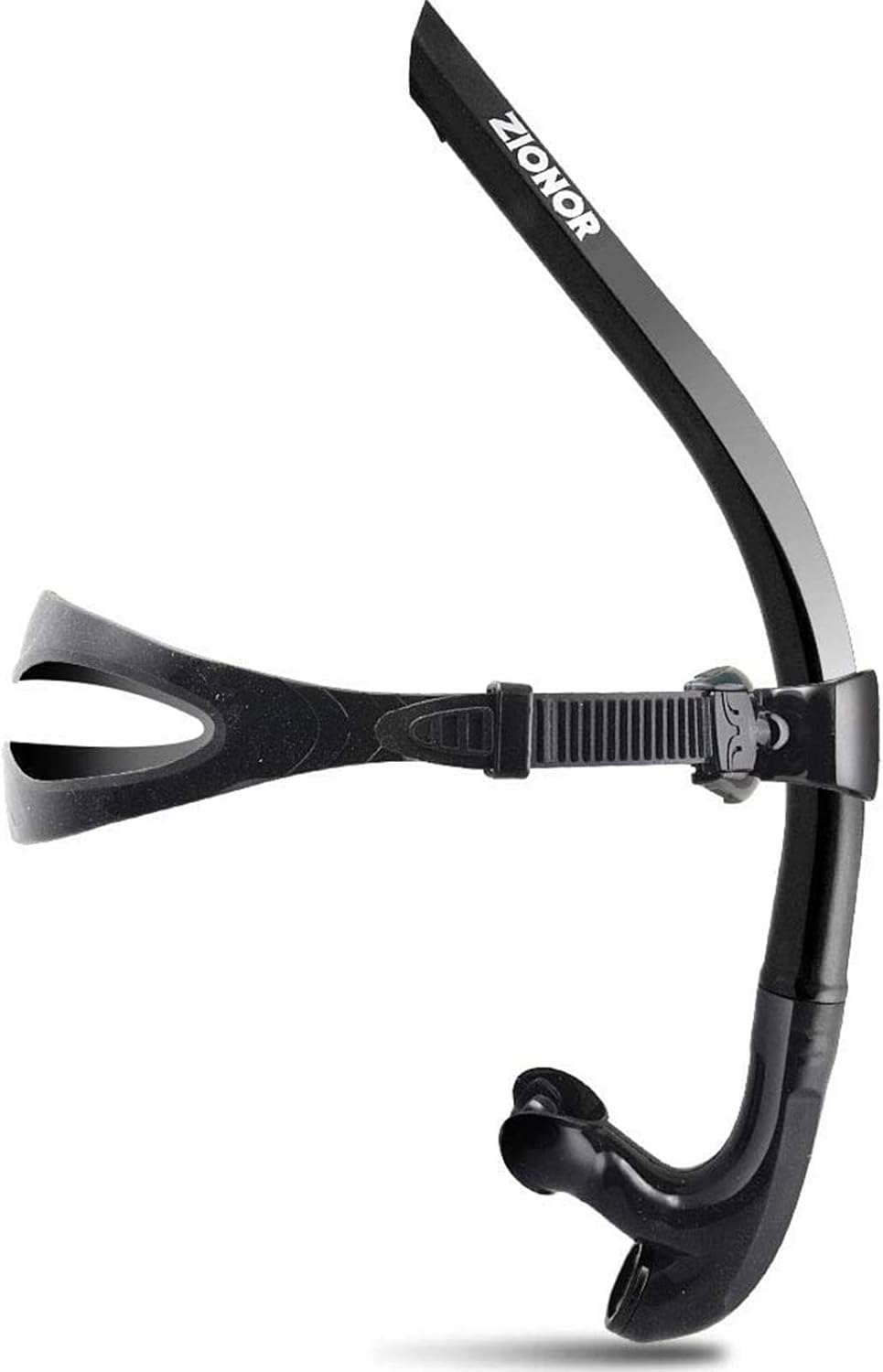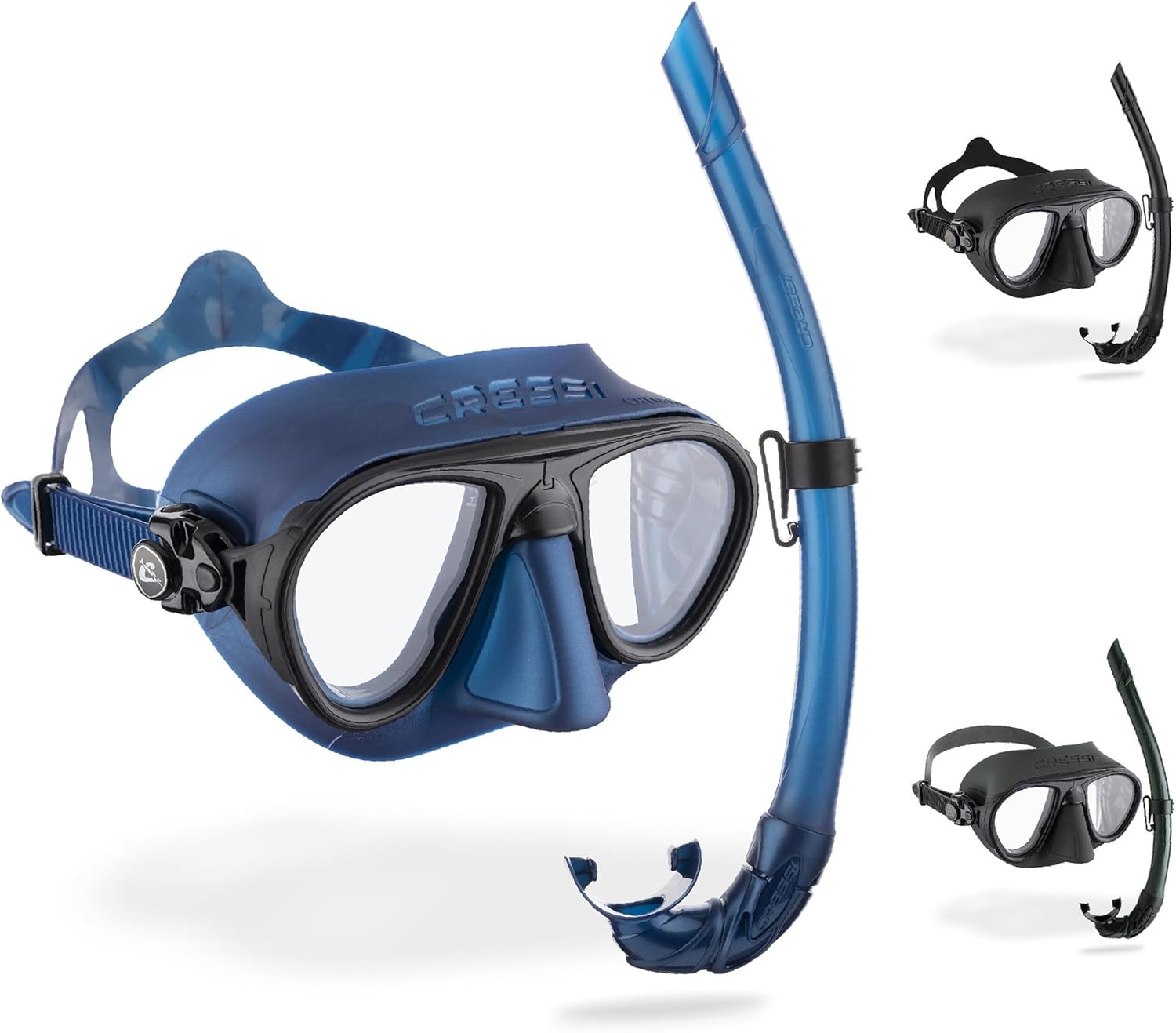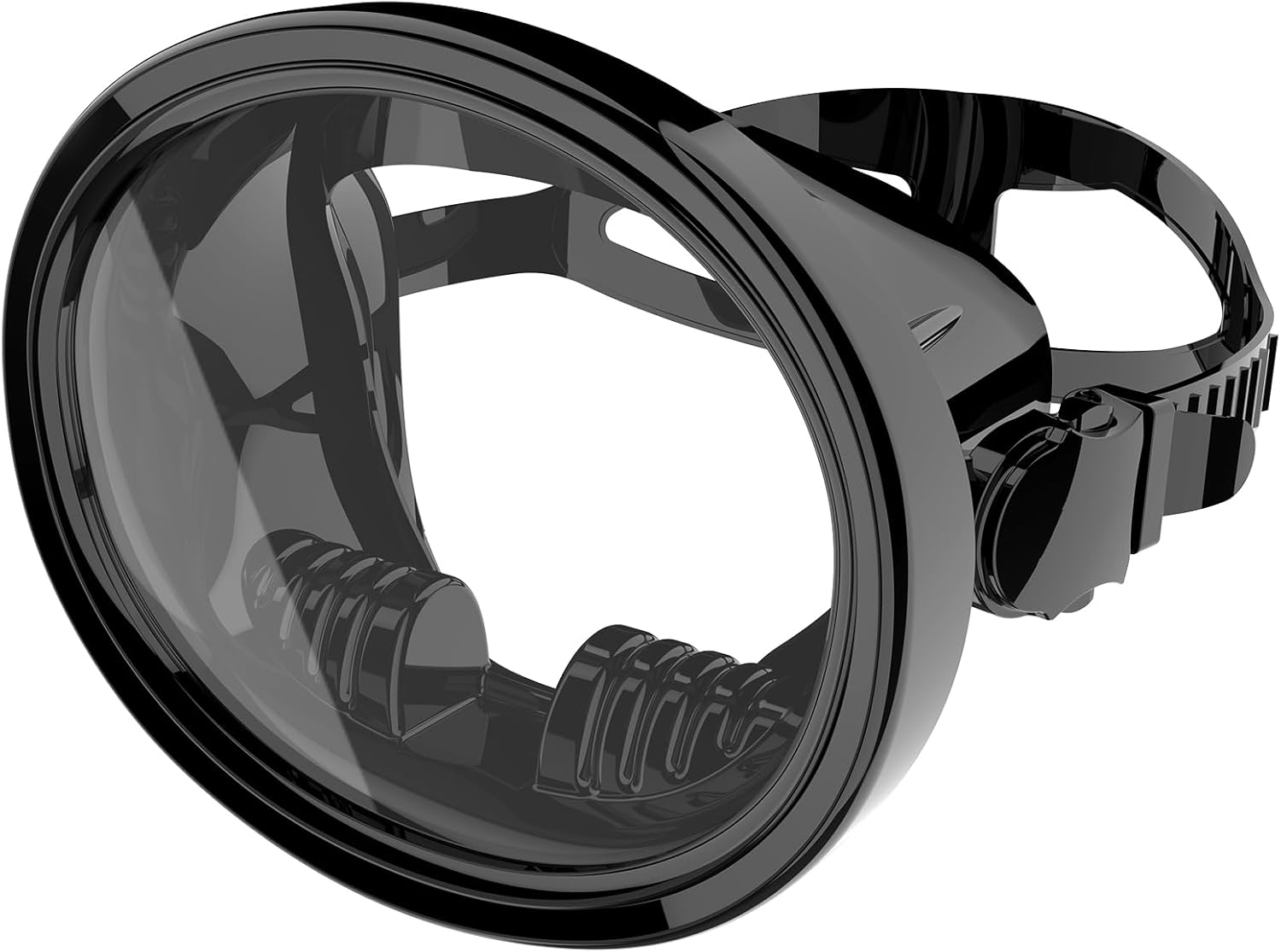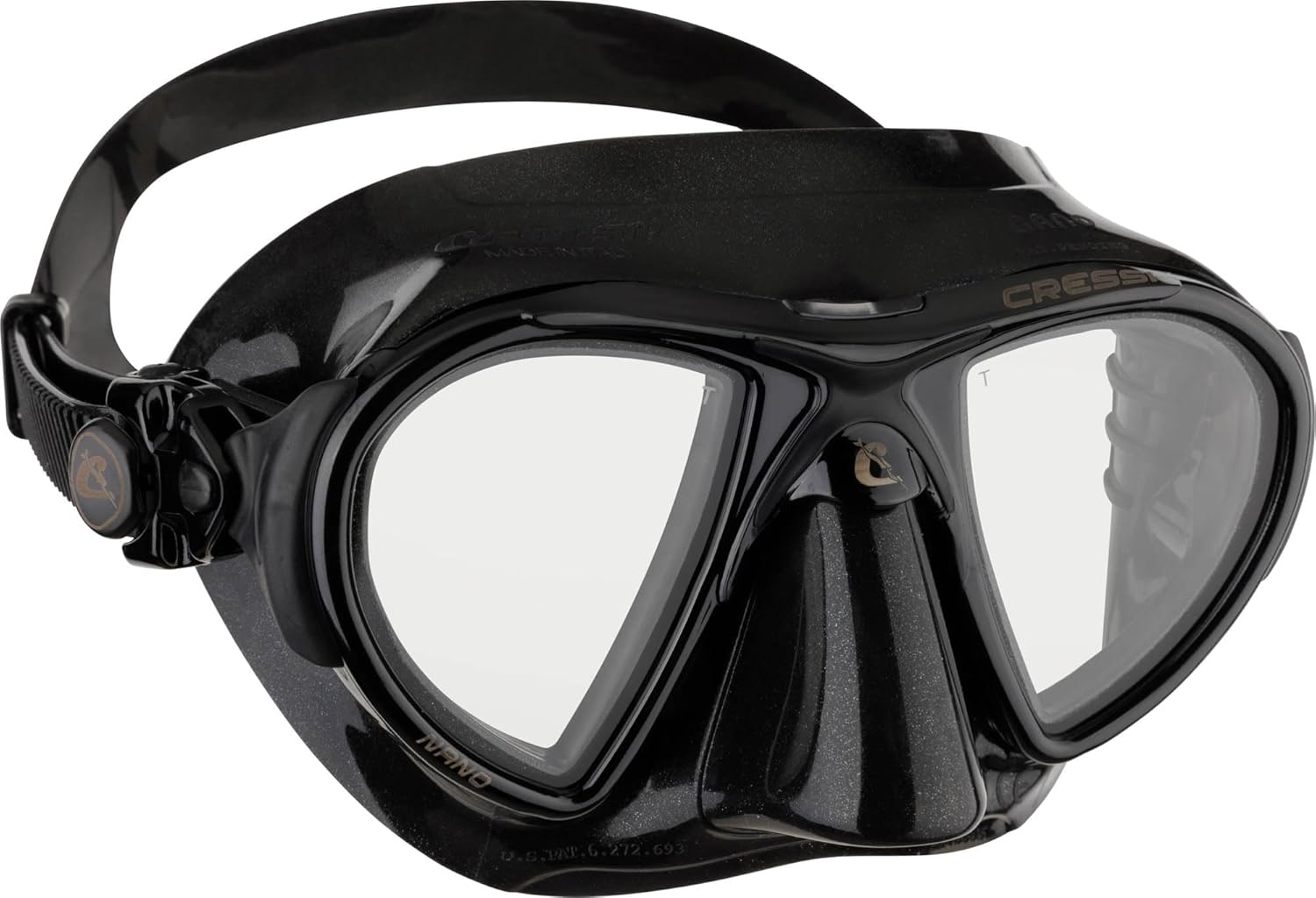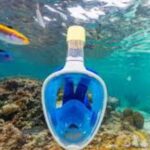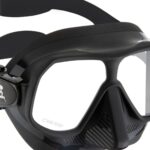Are Freediving Masks Good For Lap Swimming – An Expert’s Take
If you’ve ever wondered are freediving masks good for lap swimming, picture this: you show up at the pool wearing a sleek freediving mask and suddenly look like you’re about to break a world record or fight off a shark in lane three. Either way, people stare.
But beyond the laughs, there’s a real question here: is that mask actually helpful for swimming laps, or is it just a stylish way to fog up your vision faster?
Are Freediving Masks Good for Lap Swimming?
The short and clear answer is not really, unless you have a very specific training goal. Freediving masks are built to trap as little air as possible so divers can equalize pressure underwater, not for slicing through the water surface in a pool.
For recreational swimmers doing slow, steady laps, they can feel comfortable because of the wide view and snug fit. But if you care about speed, reduced drag, pool rules, or long-term comfort, traditional swim goggles are still the better choice.
So, while you can swim laps in a freediving mask, it isn’t designed for that purpose, and most swimmers will notice extra drag, nose coverage that disrupts breathing, and fogging issues in chlorinated pools. Think of it as driving a race car in rush hour: impressive-looking, but not the right tool for the job.
How Freediving Masks Differ from Swim Goggles
|
|
|
|
Freediving masks and swim goggles might look like cousins, but they were designed for different worlds.
- Freediving masks: Low-volume, soft silicone skirts, tempered glass lenses, and nose pockets for equalization. They’re made for diving dozens of meters below, where water pressure crushes regular masks.
- Swim goggles: Streamlined, tiny lenses that hug your eye sockets. They’re all about minimizing drag and staying on your face while you flip-turn at the wall.
A freediving mask offers panoramic vision, almost like wearing sunglasses underwater while swim goggles make you feel like a racehorse with blinders. The problem? That panoramic design also means more surface area for water resistance, slowing you down with every stroke.
For casual laps, the comfort can be appealing, but if you want performance, goggles remain the sharper tool.
Fit, Seal, and Comfort in a Pool Setting
One reason swimmers flirt with the idea of using a freediving mask in the pool is fit. A good freediving mask clings gently to the face and rarely leaks. Unlike some pairs of swimming goggles that dig into the eye sockets like tiny torture devices, a freediving mask distributes pressure more evenly.
But there’s a catch. The large skirt of a freediving mask can loosen during quick turns, and the suction that feels secure at first may not hold after repeated laps. In long swim sets, that can mean water creeping in at the edges, forcing you to stop and adjust, something no swimmer enjoys.
If you prioritize comfort for gentle swimming, a freediving mask might feel great. For lane training with quick turns and intervals, you’ll likely prefer the snug and minimal profile of swimming goggles.
Vision and Field of View: Wide Versus Narrow
A freediving mask’s greatest perk is its wide-angle view. Peripheral vision is almost natural, which can feel freeing in a busy pool. You can keep an eye on the swimmer in the next lane without turning your head.
Swimming goggles, by comparison, limit your vision. They’re designed for forward focus: walls, lines, your own pace clock. But that narrowness helps competitive swimmers keep distractions out and track their rhythm.
For recreational laps, the panoramic lens of a freediving mask feels luxurious. For competitive sets, it can actually become distracting, and the increased drag that comes with the larger lens makes it a trade-off you might not want.
Hydrodynamics and Speed: The Drag Problem
Here’s where the science speaks loudly. Drag is every swimmer’s enemy. Anything that sticks out from your body, even slightly, creates resistance.
Freediving masks, while sleek compared to scuba masks, still have more volume and frontal area than swimming goggles. That means more water hitting the mask, slowing your forward motion.
If you’re timing your laps, the difference is obvious. A few tenths of a second per length adds up quickly. If you’re just swimming for fitness, the drag might not matter. But for competitive or technique-driven swimmers, it’s a deal-breaker.
This is why elite swimmers never wear freediving masks in practice. They want the least possible drag, and goggles are the tool for that.
Breathing and Nose Coverage in Pool Laps
Another sticking point is the freediving mask’s built-in nose pocket. It’s critical for equalizing pressure during dives, but it complicates surface swimming. With the nose covered, you can’t exhale through it naturally while swimming laps.
That changes your breathing rhythm, especially in freestyle, where many swimmers release air through both nose and mouth between strokes.
This can feel awkward at best and suffocating at worst. Some swimmers adapt, breathing only through the mouth, but it’s not ideal for long pool sessions. Swim goggles leave the nose free, allowing more natural exhalation and rhythm.
Fogging and Pool Chemical Damage
|
|
|
|
Anyone who has worn a freediving mask in a pool knows the frustration of fog. Chlorine and temperature changes make it worse. While anti-fog treatments exist, freediving masks fog up more noticeably because of their larger lenses.
Chlorine also wears down the silicone skirts and can slightly cloud tempered glass over time. Swim goggles are designed with pool use in mind, so they handle chemicals better and are easier (and cheaper) to replace when the inevitable fog and scratches show up.
Safety and Pool Rules You Should Know
Here’s a practical point many forget: many pools don’t allow masks that cover the nose. Lifeguards discourage them because they can make it harder to spot swimmers in trouble and can encourage unsafe breath-hold training.
Some pools go further and ban snorkeling gear set items altogether, including freediving masks, snorkels, and fins.
Before you commit to using one, check the rules of your local pool. Showing up with a freediving mask only to be told to remove it isn’t the best start to your workout.
Equalization Features: Useful in the Ocean, Useless in the Pool
Freediving masks are carefully engineered for depth. Low internal volume allows divers to equalize with less effort as they descend. But in a pool, there’s nothing to equalize. You’re swimming on the surface, where water pressure is constant.
This means one of the main selling points of a freediving mask doesn’t benefit you at all during lap swimming. It’s like bringing a parachute to the grocery store, you just won’t need it.
Use Cases Where Freediving Masks Make Sense in the Pool
There are a few scenarios where freediving masks actually shine in a pool:
- Freediving training: Practicing breath-hold dives, finning technique, or underwater dynamics.
- Rehabilitation swimming: Swimmers recovering from eye injuries may prefer a softer, more spacious seal.
- Open-water prep: Training with equipment you’ll use in the sea can help you adapt before hitting the waves.
Outside of these cases, swimming goggles or even a swimming mask full face (designed for surface use) are more practical.
Situations Where You Should Avoid Them
|
|
|
|
For competitive swimmers, lap counters, or anyone who times intervals, freediving masks are a poor choice. They create drag, alter breathing rhythm, and may be disallowed at many pools. If you want to improve speed or race performance, stick to swim goggles.
If you’re interested in leisurely pool swimming, you might explore alternatives like a best full face snorkel mask for swimming laps or a swimming snorkel paired with low-profile goggles, which are designed with surface swimming in mind.
|
|
|
|
The Buying Guide: What to Look For If You Still Want to Try
If you’re set on testing a freediving mask in the pool, here’s what to check:
- Low profile design: Choose the slimmest freediving mask possible to reduce drag.
- Soft silicone skirt: Helps prevent leaks and stays comfortable longer.
- Anti-fog coating: Essential in warm indoor pools.
- Tempered glass lenses: Durable, though heavier than plastic.
- Quick-release strap: Makes it easier to adjust mid-swim.
Consider trying a hybrid option like a swimming snorkel combined with small goggles, which gives you steady breathing without the bulk of a mask.
Creative Alternatives for Pool Training
If the freediving mask doesn’t work out, these alternatives can solve common pool pain points:
- Swimming goggles: Best for competitive, streamlined training.
- Swimming mask full face: Offers comfort and wide view for recreational laps.
- Swim snorkel for lap swimming: Helps you focus on stroke technique without worrying about head rotation.
- Snorkeling gear set for beginners: Useful if you want pool training that mimics open-water conditions.
Each of these options is built with pool training in mind, unlike the freediving mask.
FAQs on Are Freediving Masks Good For Lap Swimming
Can I Wear A Freediving Mask In Competitions?
No. Swim federations require standard goggles or no eyewear at all. Masks are prohibited due to drag and safety concerns.
Why Do Freedivers Prefer Masks Over Goggles?
Because goggles can’t equalize pressure at depth. Masks with nose pockets allow freedivers to blow air and equalize their sinuses.
Are Swim Goggles Better For The Pool?
Yes. They’re lighter, cheaper, and designed to reduce drag. For most swimmers, goggles remain the best tool.
What About Full-Face Snorkel Masks?
A best full face snorkel mask for swimming laps can be comfortable for surface swimming, but most pools ban snorkels in shared lanes. Use them in open water instead.
Do Freediving Masks Damage Your Eyes In The Pool?
No, but chlorine can irritate eyes if the seal leaks. Regular swim goggles usually offer a tighter seal for pool water.
The Bottom Line On Are Freediving Masks Good For Lap Swimming
So, are freediving masks good for lap swimming? The honest answer is only in very limited situations. If you’re a freediver practicing underwater technique or someone who values comfort over speed, you may enjoy them for short pool sessions.
But for the majority of swimmers, especially those training for performance, swim goggles, a swimming snorkel, or even a surface-designed swimming mask full face will be far more practical.
In other words, freediving masks belong in the ocean, not your local lap lane. If you want to glide faster, breathe easier, and follow pool rules, goggles are the simple solution. Save the freediving mask for when you’re chasing fish, not flip turns.

